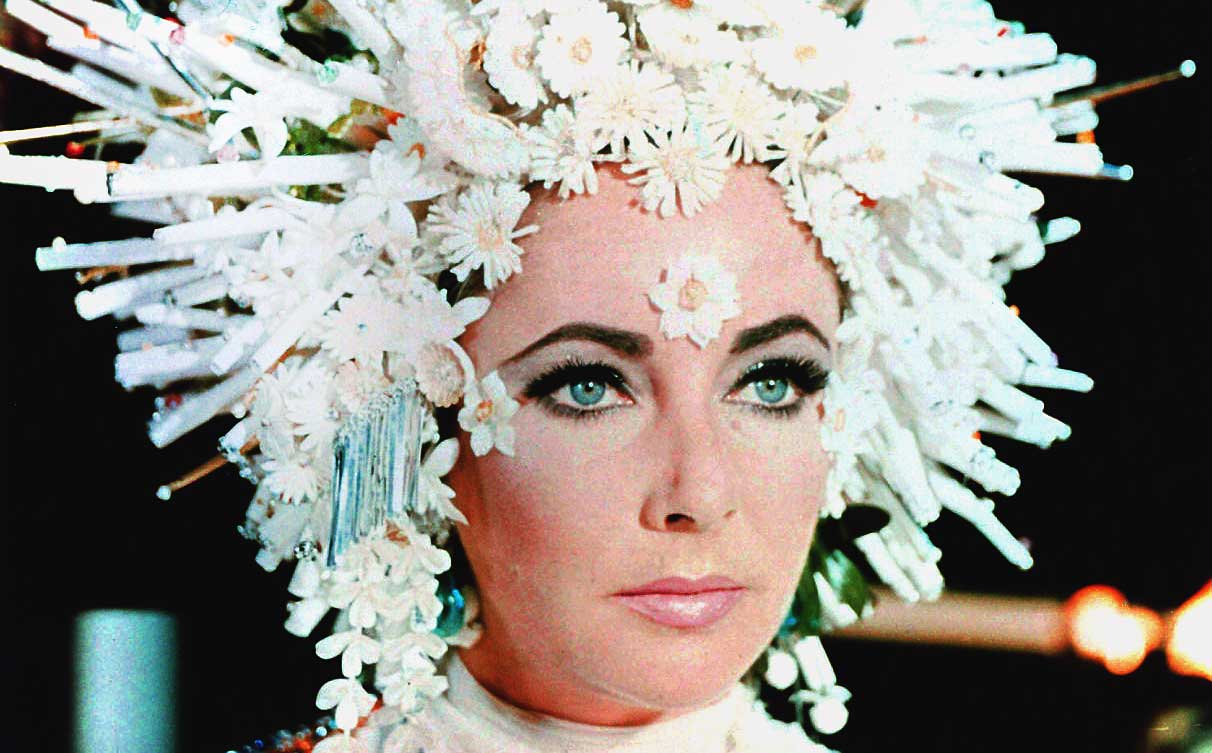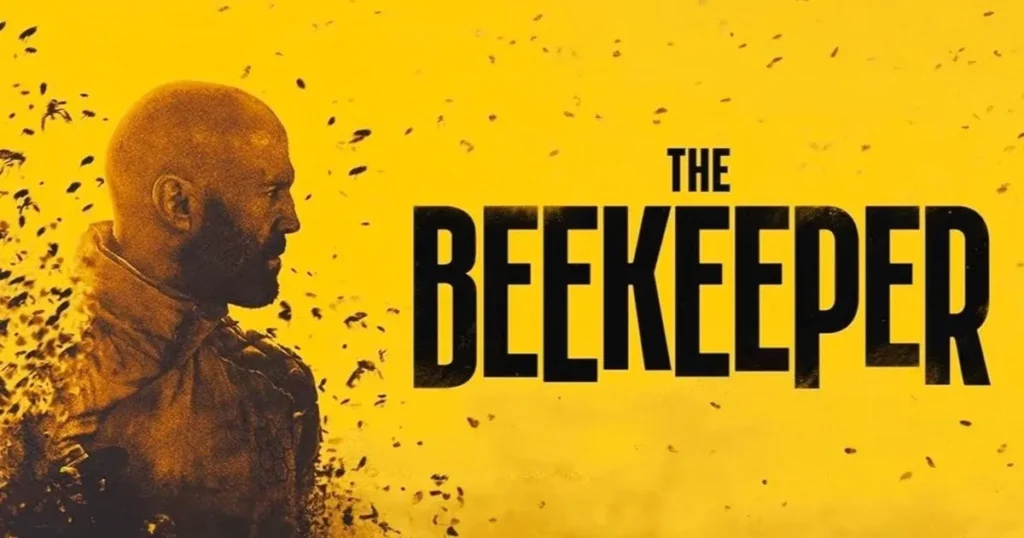Shout! Factory, much to my shock, has released the notorious 1968 Joseph Losey film Boom! (the exclamation point was used for advertising and does not appear on the film’s title) on Blu Ray. Based on Tennessee Williams’ 1963 play The Milk Train Doesn’t Stop Here Anymore; Williams is credited with adapting the play for the woefully miscast Elizabeth Taylor and Richard Burton.
The Production: 4/5
Boom…
The shock of each moment,
of still being alive.
Boom! is a mess and depending on one’s taste, either a glorious mess or just a dismal mess. I find it to be the former, which means I would pass the John Waters (who does the audio commentary) test. Where I part with Waters is that I think it is mostly intentional; Waters is uncertain. I’ll address that later.
Boom! tells the story of the wealthy and pampered Sissy Goforth, writing her memoirs in seclusion, being visited on her remote Italian island by roaming stranger Christopher Flanders, who may or may not be the Angel of Death. That’s it as far as plot goes.
The movie is just a series of exchanges between Goforth and her staff, Goforth and the Witch of Capri (Noel Coward – don’t ask, don’t tell), and Goforth and Flanders. Some of these exchanges are beautiful and poetic, some are comic, some are grotesque. What they have in common are they are mostly purple and uniquely Williams.
Boom! Is based on the Williams play The Milk Train Doesn’t Stop Here Anymore. The original cast included Hermione Baddeley as Goforth. That’s right, Maude’s second maid originated the role 35-year-old Elizabeth Taylor would play in the movie. That gives you an idea of the casting craziness. That production was not successful and closed quickly.
Williams was a constant tinkerer and re-writer and two years later another production opened on Broadway. This time directed by Tony Richardson and starring Tallulah Bankhead in the Goforth role and Tab Hunter in the Christopher Flanders role. Tallulah made a priceless comment when asked by a reporter about Hunter’s sexual preference; I urge readers to look it up. This production closed quickly as well.
Because the material contains so many recurring Williams’ themes it could almost be looked at as either a summation or a spoof. One of the themes is that of an aging woman who turns to a younger man for redemption; hoping his purity will cleanse her soul, only to be deceived by the appearance of youth and ultimately destroyed. If this sounds wacky it may be because we’re used to seeing this scenario played out with the sexes reversed. Think of all the male mid-life crisis dramas of post-war American theater, movies, and fiction.
Elizabeth Taylor and Richard Burton were two of Hollywood’s biggest stars of the 1960s. They met on the epic 1962 production of Cleopatra. Their romance was born in scandal, a street Taylor was already familiar with, and played out in tabloids with each leaving their spouse. Both had appeared previously in other successful Williams screen adaptations, Taylor in 1958’s Cat on a Hot Tin Roof and 1959’s Suddenly, Last Summer, and Burton in 1964’s Night of the Iguana.
Taylor and Burton appeared in 11 films together and once on Broadway in the 1980s in a revival of Noel Coward’s Private Lives, written 40 years before he was a witch. One has to give credit to Liz and Dick; they took chances in selecting the films they appeared in together. Who would ever think films of Taming of the Shrew, Doctor Faustus, Boom!, or Under Milk Wood would draw flies let alone audiences? They easily could have made variations of The V.I.P.s for the duration of their marriage.
To say that the two actors are miscast in Boom! is an understatement. Taylor despite her history of health scares looks plenty healthy for a croaking lady. John Waters cruelly jokes on the commentary of how similar Taylor and Divine look. She is 20 or 30 years too young for the role.
Burton, cast as a young stud poet (does such a creature really exist outside of the mind of Tennessee Williams?) suffers on the other end being in his mid 40’s and looking older. Burton was a great actor who may have squandered his talents, but delivered when the stars were aligned – even here there’s no denying the power of his voice and presence but it was a role written for a man in his early 20’s – perhaps Michael York?
Poor Liz – I may get some flack here, but I find her to be a limited actress with a tiny, shrill voice. I’m in the minority when I say that she is miscast in Who’s Afraid of Virginia Woolf? but she deserves credit for working hard to overcome the miscasting and pulls it off, barely. Imagine Edward Albee’s original choices, Bette Davis and James Mason in the roles. As Goforth, Liz yells and rants against life and death simultaneously for the entire running time and comes across as a petulant little girl. There is one line of dialogue that was particularly shocking at the time that makes me laugh every time I hear it because of her delivery. I don’t think that’s what Williams originally envisioned.
Now, we come to the big question: is Boom! a comedy? I vote yea. Williams’ friend Gore Vidal wrote in an essay shortly after Williams’ death that people often overlooked Williams’ comic talents. I concur; I can’t think of any major Williams play or short story that doesn’t contain large doses of comedy. Vidal compared Williams, born and raised in St. Louis, to fellow Missourian Mark Twain.
In the original play, the character of The Witch of Capri was a female. In Boom! the role is played by Noel Coward chewing up every piece of luscious scenery he can sink his choppers into, even howling like an animal at one point! I have no idea whose idea it was to make this change (Williams? Losey?), but I challenge anyone to deny this isn’t a comedy after viewing Coward’s insane entrance, let alone Burton prancing around most of the movie in a samurai robe complete with sword or Michael Dunn’s turn as a fascist security guard whose attack dogs tower over him. This was clearly intended to be a grotesque comedy.
Joseph Losey was a major director who was one of the few lucky artists whose career rebounded in Europe, particularly in England, after being blacklisted as a communist in Hollywood in the early 50s. This was his first film in over 15 years backed at least in part by Hollywood money. Losey was a versatile director who made great films in several genres. By all accounts, he was an intelligent man and his films reflect this. Two years earlier he directed Modesty Blaise – I think he knew a thing or two about camp comedy.
For me, the question of intentionality comes into play with Losey’s direction; did he direct Taylor and Burton to give these performances? Both play their roles pretty straight – Taylor seems to be channeling her own performance from Virginia Woolf. She certainly gives the role a sexual dimension that Baddeley and by that time Bankhead would be incapable of but misses the comic notes that two actresses could deliver in their sleep. Taylor’s performance lacks any sense of irony. Did Losey think by playing it straight the film would play campier?
Video: 4.5/5
3D Rating: NA
I’m not sure of the source of this transfer, but it looks gorgeous to me. Shout! Factory’s transfer is in the original ratio of 2.35:1. I saw a 35mm print of this movie just a few years ago and this transfer tops that print easily. That might not be a fair assessment and have more to do with the projection system of the venue I saw it at, but the color and lighting on this transfer are just lovely. The source used is free of any noticeable damage.
Audio: 4/5
The audio is DTS-HD Master 2.0 mono. The constant sounds of waves crashing against the rocks, dialogue, and music sound clear, as if they were recently recorded.
Special Features: 4/5
Extras include:
A new audio commentary by filmmaker John Waters. I have to confess that this commentary excited me almost as much as the announcement of the film itself. Waters is obsessed with this movie. I didn’t realize how often he alludes to it in his own movies until he pointed out the instances in his commentary. Even some of his advertising campaigns steal from Boom! Waters has toured the country introducing the film at museums and revival houses. I can’t imagine how many times he has watched this movie and yet it’s clear while listening to him talk about the film he still finds the film mysterious. One can sense his amazement at some scenes as he ponders to himself, “what were they thinking?” Waters also states that he believes the film was fueled by vodka as the stars and director started each day with Bloody Marys. Waters says that Liz and Dick were so juiced up during production that they mistakenly thought the seaside mansion set was real and wanted to purchase it – I’ll have whatever they’re drinking. It’s a fun and completely subjective commentary.
The Sound of a Bomb; Contextualizing Boom! Is a 20-minute video piece with critic Alfonso Duraldo in which he gives some context to the film by mixing historical and gossipy tidbits.
Photo galleries
Theatrical trailer
Overall: 4.5/5
Williams is reported to have said that Boom! was the best film adaptation of all his works. I don’t agree with this assessment, but in a strange way, I can see why he thought it. I’ve always thought that Williams’ work should be directed in a non-naturalistic, even expressionistic style. Boom! is plenty stylized. The photography by Douglas Slocombe is simply stunning. Every shot is beautiful, creating an otherworldly feel in real locations. I’ve seen this movie 4 times in the last five years. I don’t find it boring for a moment and find it weirdly mesmerizing. I could just sit and admire the images. Williams also said in later interviews that the 1960s passed him by in a blur of booze and drugs. Maybe that’s why he thought this was the best film adaptation of one of his plays? In any event, I recommend it highly and if you don’t like it, you’ll have to answer to John Waters!
https://www.amazon.com/Boom-Blu-ray-Elizabeth-Taylor/dp/B07NN3Y3G9/ref=sr_1_3?crid=3N8GVYBZDYIJ0&keywords=boom+blu+ray&qid=1565298316&s=movies-tv&sprefix=boom%21%2Caps%2C150&sr=1-3Post Disclaimer
Some of our content may contain marketing links, which means we will receive a commission for purchases made via those links. In our editorial content, these affiliate links appear automatically, and our editorial teams are not influenced by our affiliate partnerships. We work with several providers (currently Skimlinks and Amazon) to manage our affiliate relationships. You can find out more about their services by visiting their sites.







Similar threads